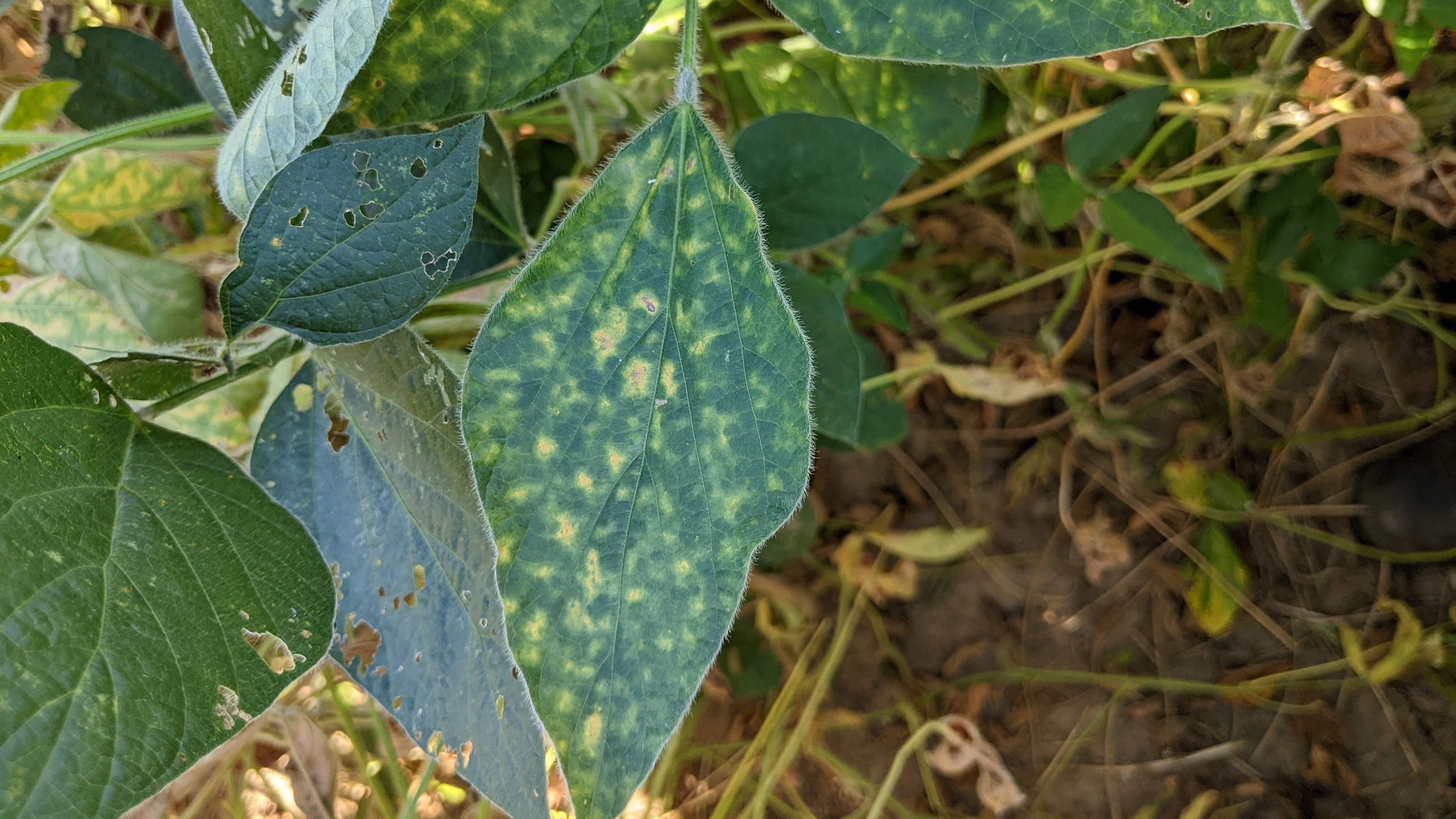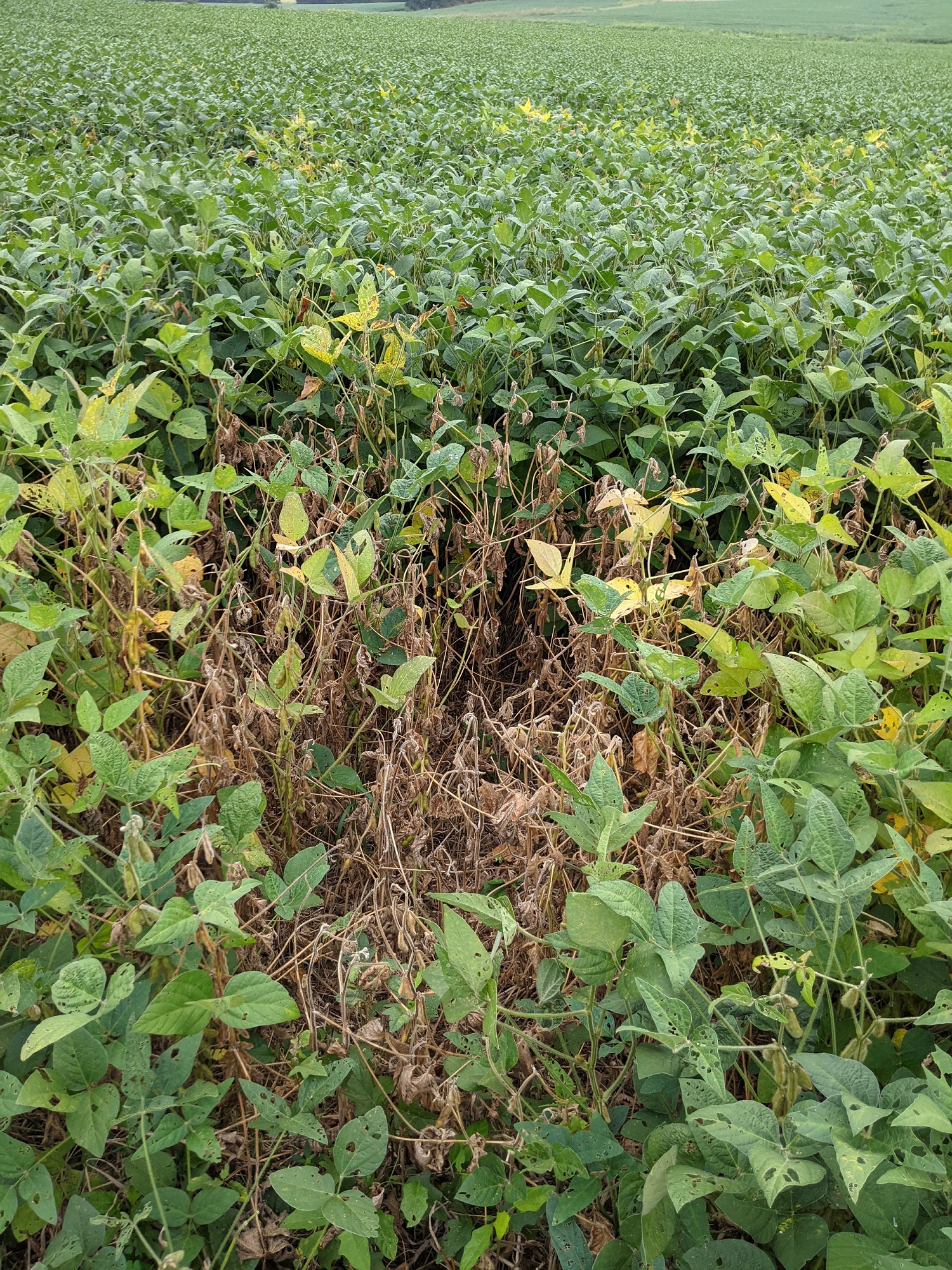University of Kentucky researcher leads effort to combat deadly soybean disease
University of Kentucky researcher leads effort to combat deadly soybean disease


Red crown rot, a significant threat to soybean production, has been identified in several counties in Kentucky, marking a concerning development for local farmers. First confirmed in the state in 2021, red crown rot has the potential to severely impact soybean yields.
The disease, caused by the fungus Calonectria ilicicola, historically impacted the southern U.S., particularly in Louisiana and Mississippi. However, recent findings indicate red crown rot has spread north, with cases reported in Western Illinois in 2018 and multiple counties in Kentucky since 2021. The disease primarily affects soybean roots, lower stems and leaves, causing significant plant damage and yield reductions.
University of Kentucky Martin-Gatton College of Agriculture, Food and Environment plant pathology professor and extension specialist Carl Bradley described many researchers as surprised when red crown rot appeared in Kentucky. Bradley said some affected fields could experience up to a 50% loss in crop output.
"It was a bit of a shock when (red crown rot) appeared in Kentucky three years ago," Bradley said. "We've been surveying for it ever since and we’ve now confirmed cases in Graves, Calloway and Carlisle counties."
Symptoms and spread

Red crown rot symptoms include yellowing and necrosis (dead tissue) between leaf veins on soybean plants, often appearing during reproductive stages. The disease can be tricky to identify, as its symptoms are similar to other common soybean diseases in Kentucky, such as sudden death syndrome (SDS) and southern stem canker. However, the distinctive red discoloration on lower stems and roots helps differentiate red crown rot from these similar-looking diseases.
Infected plants tend to occur in patches within fields, which can grow larger over time. In some extreme cases, farmers may experience yield losses of over half in heavily affected areas.
Research into red crown rot management is ongoing. With grant support from the Kentucky Soybean Promotion Board, Bradley and his team have been working with the University of Illinois to conduct field trials in Western Illinois, where similar outbreaks have been observed. Over the past three years, they have evaluated seed treatments and planting dates to determine the most effective strategies for mitigating the disease.
What farmers can do
For Kentucky farmers, early detection and proper management are key to minimizing yield losses from red crown rot. Farmers who suspect the disease in their fields are encouraged to contact their local county extension office and submit samples to the UK Plant Disease Diagnostic Laboratory for confirmation.
There are currently no in-season rescue treatments available for red crown rot. Instead, farmers must focus on long-term management strategies, such as crop rotation, to reduce the fungus presence in the soil. "Rotating to a non-host crop like corn for two or more years can help decrease the inoculum levels in the soil," Bradley advised.
Current research focuses on finding more effective seed treatments and Bradley hopes to explore potential differences in susceptibility among soybean varieties in the future.
Red crown rot is a growing concern in Kentucky and neighboring states, with recent cases confirmed in Southern Illinois and Indiana, just across the Ohio River from Kentucky’s border counties. As the disease spreads, farmers throughout the region must remain vigilant.
"We know it’s here and spreading," Bradley said. "Farmers must be aware of the risks, especially if they’re growing double-crop soybeans. With the right management strategies, we can minimize the damage, but it’s important to stay on top of it."
###
The Martin-Gatton College of Agriculture, Food and Environment is an Equal Opportunity Organization with respect to education and employment and authorization to provide research, education information and other services only to individuals and institutions that function without regard to economic or social status and will not discriminate on the basis of race, color, ethnic origin, national origin, creed, religion, political belief, sex, sexual orientation, gender identity, gender expression, pregnancy, marital status, genetic information, age, veteran status, physical or mental disability or reprisal or retaliation for prior civil rights activity.
Research


